
 |
|
|
#1 |
|
All the news that's fit to excerpt
Name: newsie
Location: who knows?
Join Date: Jun 2008 Motorcycle(s): only digital replicas Posts: Too much.
|
[cycleworld.com] - 2024 Kawasaki ZX-6R First Ride Review
2024 Kawasaki ZX-6R First Ride Review
Click here to view on their site. 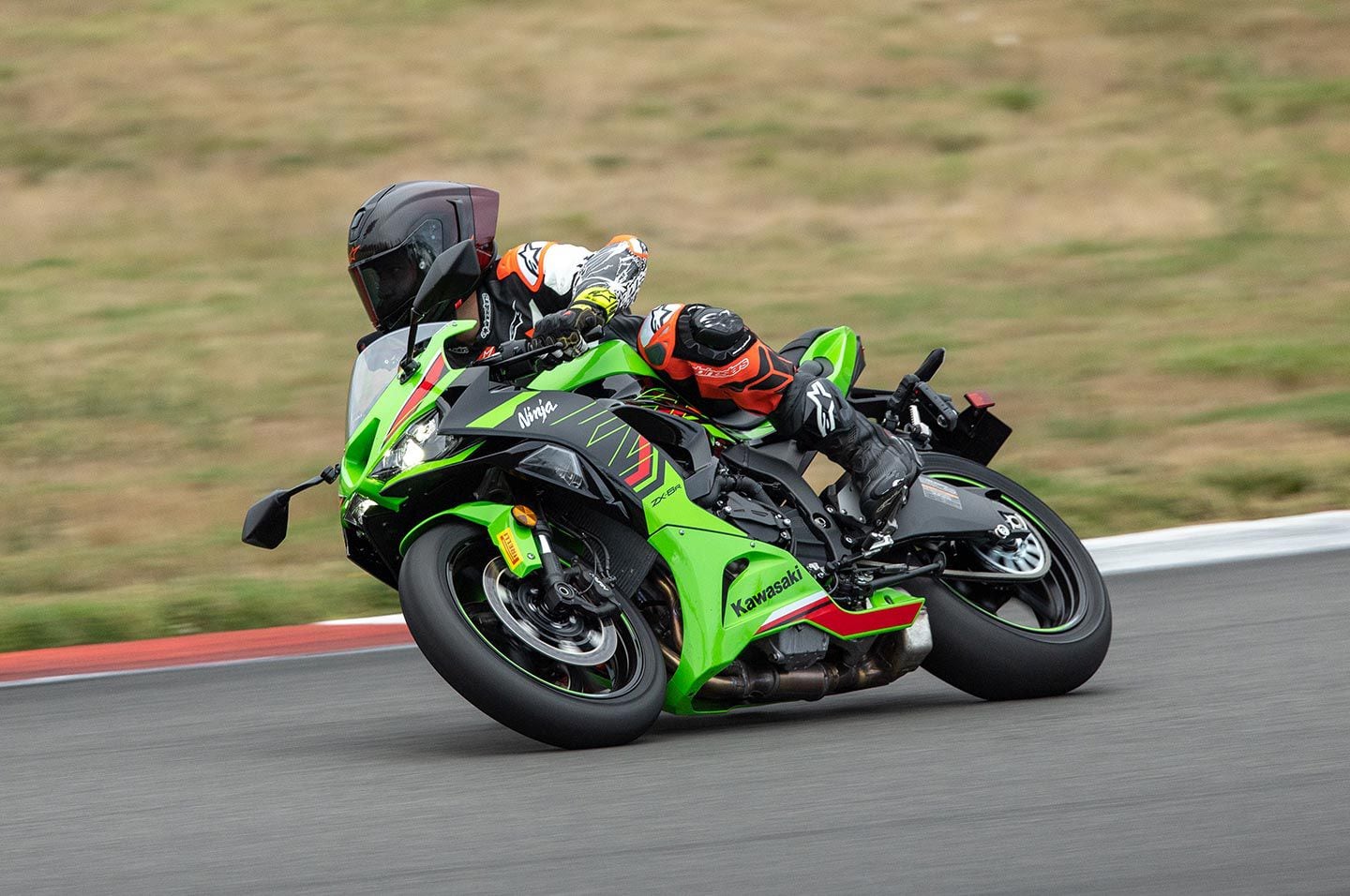 The 2024 Kawasaki ZX-6R. Through subtle updates, Kawasaki is looking to give riders a modern, but still affordable, middleweight supersport option. (Kevin Wing/)Imagine, for a moment, that you’re ready to buy a new bike. You spent the last few years getting up to speed on a Ninja 400. It’s lightweight, flickable, and fun. You’ve done a few trackdays on it and are in the canyons every other weekend. But you’ve outgrown the bike. It’s time to move on. Where to now? Enter the Kawasaki ZX-6R, a bike that Kawasaki says is integral to its lineup, not because of the racing success it once brought to Team Green, but because of the steppingstone that it offers today’s street riders. 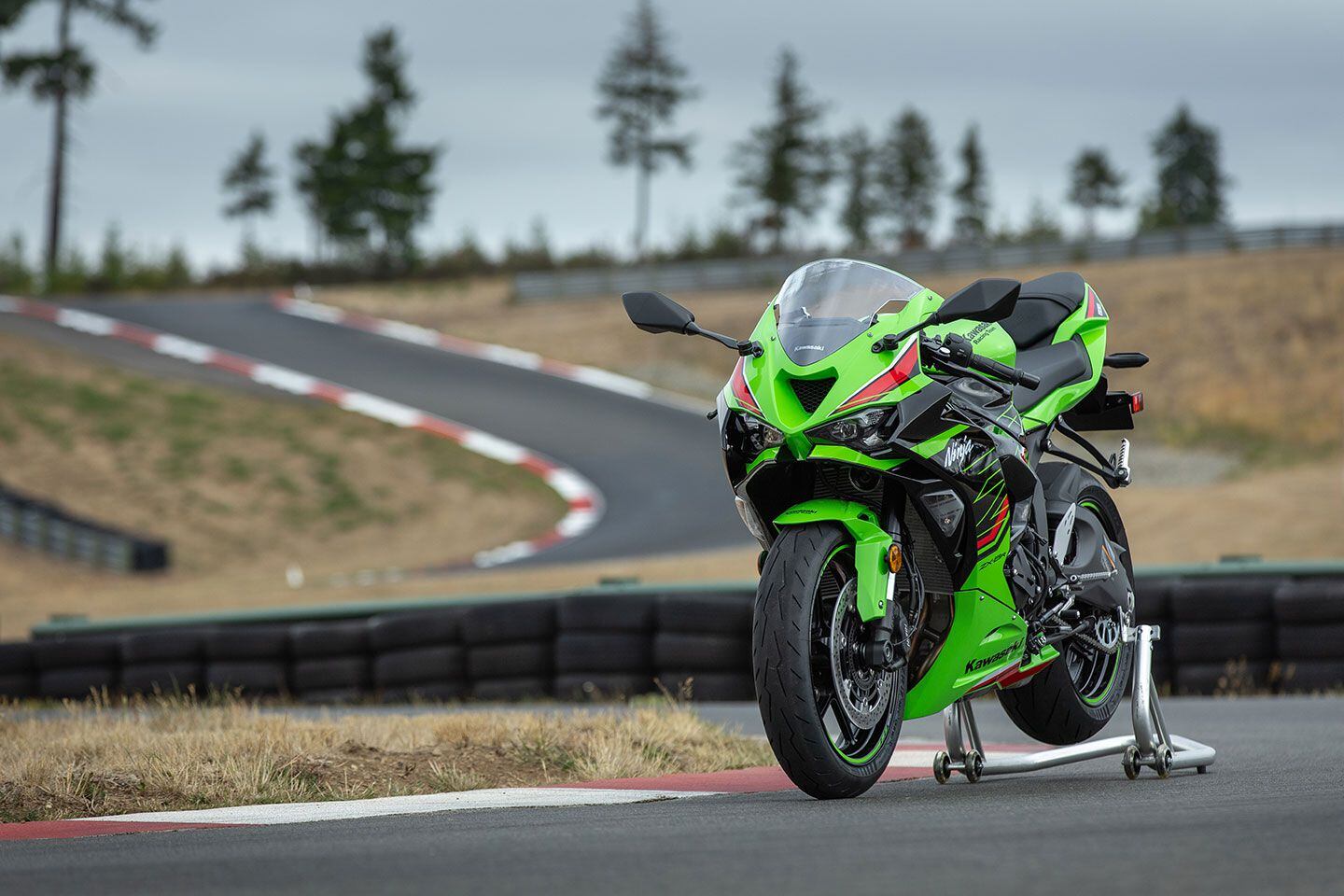 The ZX-6R gets a new look, courtesy of restyled front and side cowls. (Kevin Wing/)There are still plenty of sportbike enthusiasts out there, Kawasaki suggests, and while their ultimate goal is to be on a literbike, most aren’t in a hurry to make that leap. If Kawasaki wants to sell ZX-10Rs to the rider who started on a Ninja 400, then it’s best to have a 600 that keeps them in the family. The only thing more important than earning new customers is retaining the ones you have—for as long as you can. About the Bike Kawasaki didn’t need to reinvent the wheel when it came time to update the ZX-6R, given that the only genuine middleweight competition is the Suzuki GSX-R600 ($11,899) and US-spec Honda CBR600RR ($12,099), both of which had already fallen behind the ZX-6R from a technological standpoint. That doesn’t mean customers couldn’t go elsewhere, which is why Kawasaki felt the need to invest at least some resources into the platform. Looks sell, after all. Related: 9 Middleweight Sportbikes You Can Buy in 2023 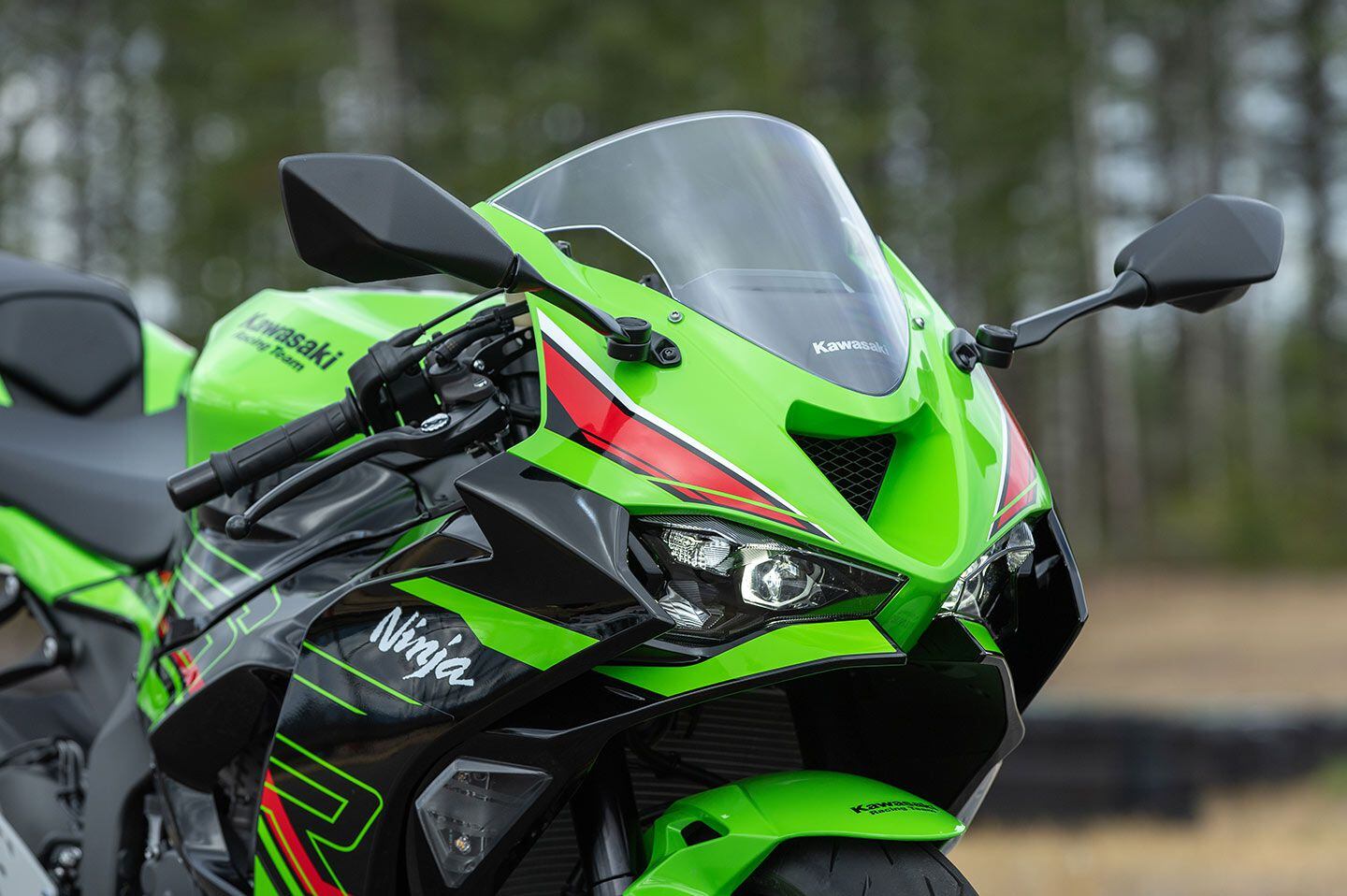 Closer look at the ZX-6R’s new face. Kawasaki says the holes in the windscreen relieve pressure buildup behind the screen to help reduce buffeting. (Kevin Wing/)The updated design is inspired by the ZX-10R, and distinguishes itself from the outgoing ZX-6R through a combination of new front and side cowls. The fairings are mostly intended to sharpen the look, but provide a very small aerodynamic advantage, according to Kawasaki representatives. Keen eyes will notice the updated windscreen, new LED lights, and blacked-out engine covers. The tank, seat, and tailsection are unchanged. Throw a leg over the ZX-6R and you’ll notice the next addition: a 4.3-inch full-color TFT display that’s simple in design, but an obvious upgrade over the LCD display and analog tachometer found on the previous-generation ZX-6R. Nothing can date a bike more than an antiquated dash (it’s the thing you’re constantly looking at as you ride!), and given that TFTs have already made their way into the entry-level, small-displacement category, it only makes sense to have one here. The wait was worth it, as the dash gives the new ZX-6R a more modern look. 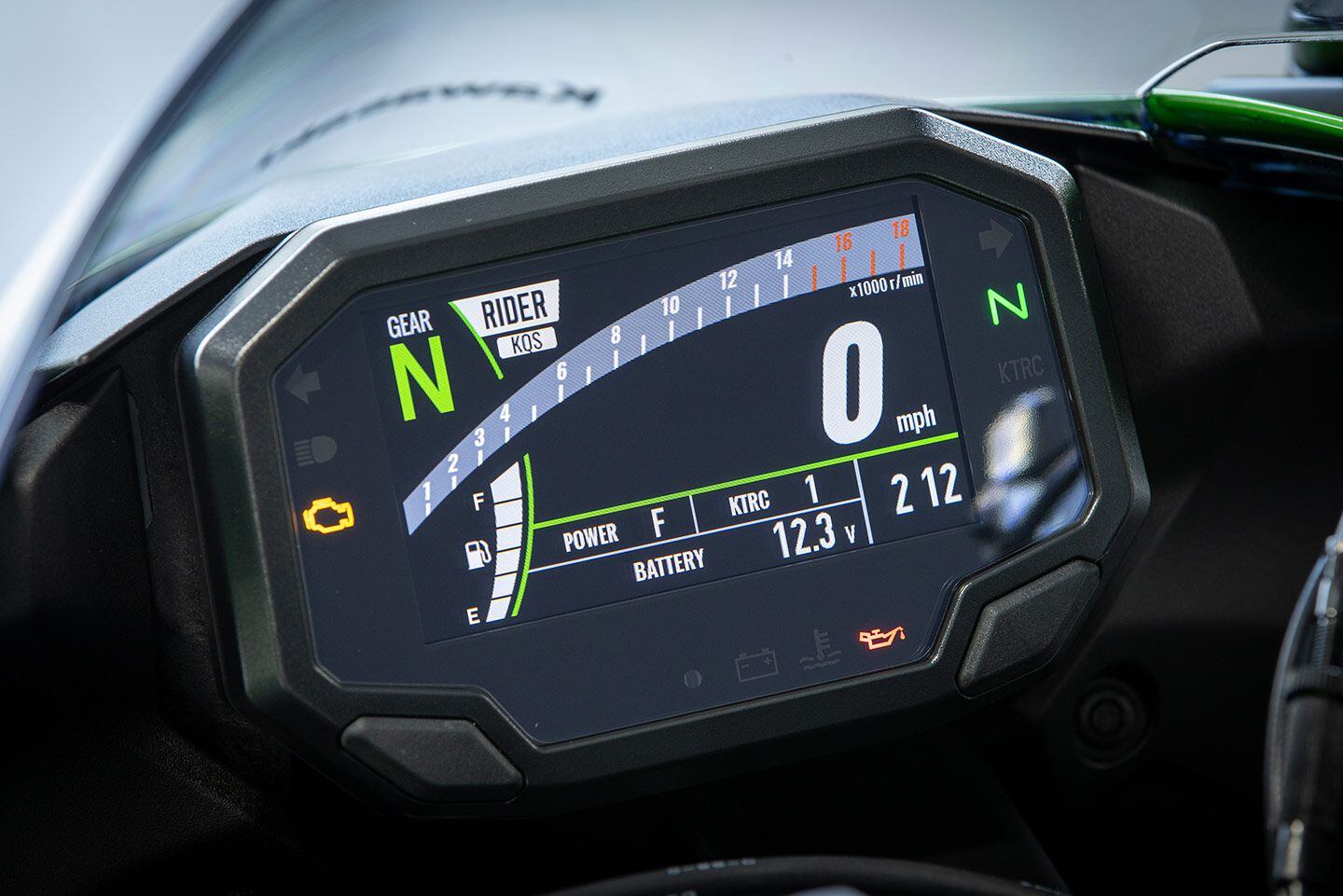 The 4.3-inch TFT display gives the ZX-6R a modern look with bright colors and bold fonts. Notice the Power and KTRC setting options, which can be adjusted only when in the (shown) Rider mode. (Kevin Wing/)In another effort to modernize the ZX-6R, Kawasaki added three preset ride modes (Sport, Road, and Rain), each with a dedicated setting for traction control and power (Full or Low). There are three traction control levels in total; Sport mode uses TC level 1, Road TC level 2, and Rain TC level 3. A fourth mode, Rider, is customizable and allows you to select the traction control and power settings of your choice, just as you could on last year’s bike. Important to mention is that, while integrated ride modes are new, the traction control, power modes, and electronic quickshifter software are identical to the systems found on last year’s bike. While looks and features are important, Kawasaki had to take Euro 5 emissions standards into consideration when building the new ZX-6R. The previous model met Euro 4 standards and couldn’t be sold in Europe. The solution? New header pipes and updated cam profiles with less lift and duration, which helps with smooth running at lower rpm, but certainly won’t do anything to help top-end performance. Less aggressive cams are one strategy among many used to comply with current emissions standards. The power curve is further manipulated by increasing the length of the middle two intake funnels by roughly 20mm, which boosts midrange performance. 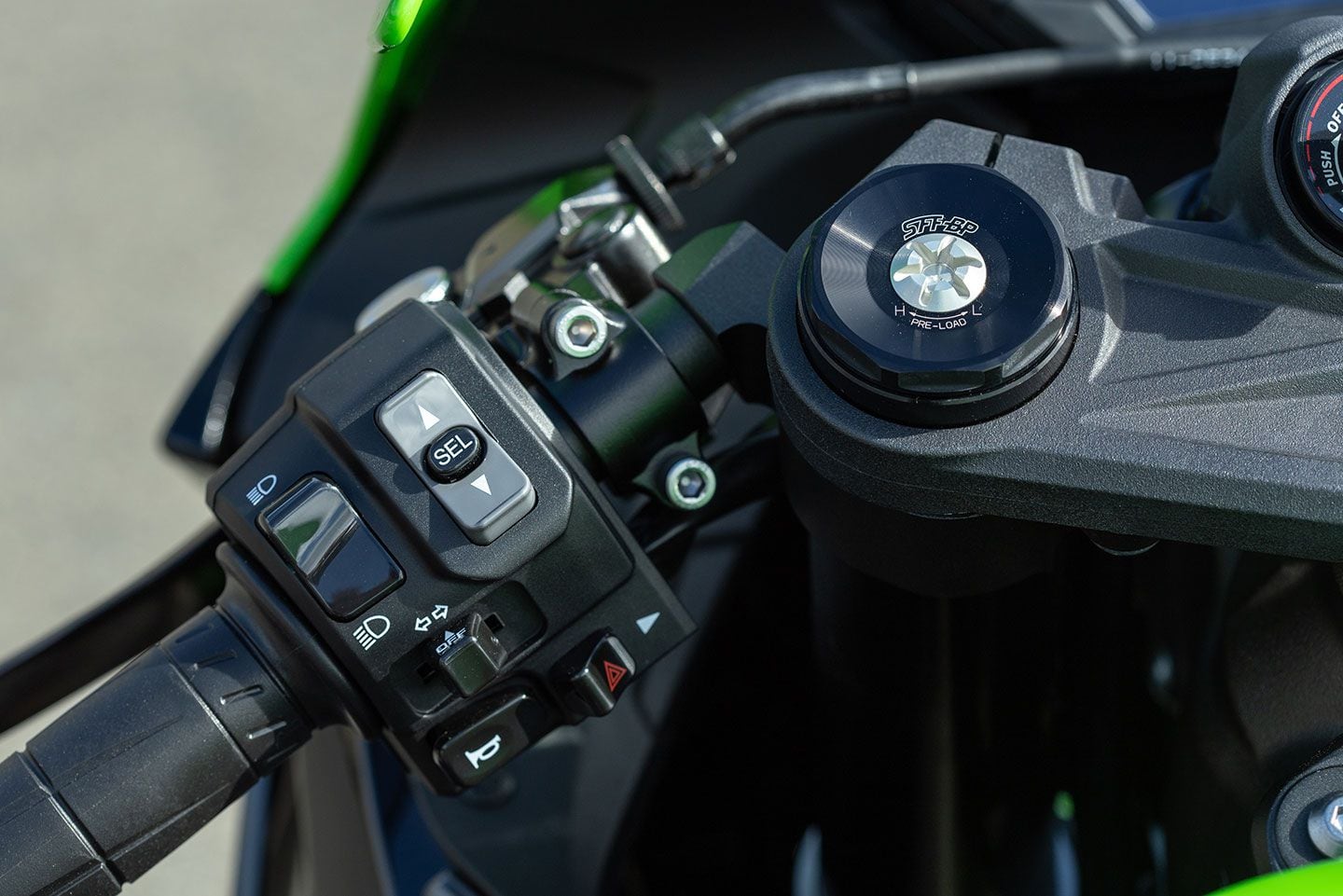 The 2024 ZX-6R uses the same switch cluster as before. An extended press down or up changes ride modes. Quick presses are for scrolling through information screens. It’s a simple but effective system. (Kevin Wing/)Midrange performance has always been a key focus for Kawasaki, who unveiled the current-generation 636cc ZX-6R in 2013 and always claimed this was a bike meant for the street rider, just as much as it was the racer or trackday enthusiast. The extra midrange grunt from that 37cc solidifies that claim. Not a lot has changed from a chassis perspective over the years, and that continues to be the case for 2024, the new ZX-6R rolling on the same twin-spar aluminum frame as before—a design that seemingly works for Kawasaki. Given the costs associated with designing, testing, and manufacturing an entirely new frame, this comes as little surprise; added costs must be passed through to the consumer, and in the 600 class greater emphasis is placed on an affordable MSRP. A moderately more capable bike does not guarantee more sales, especially if it comes at a higher price tag. 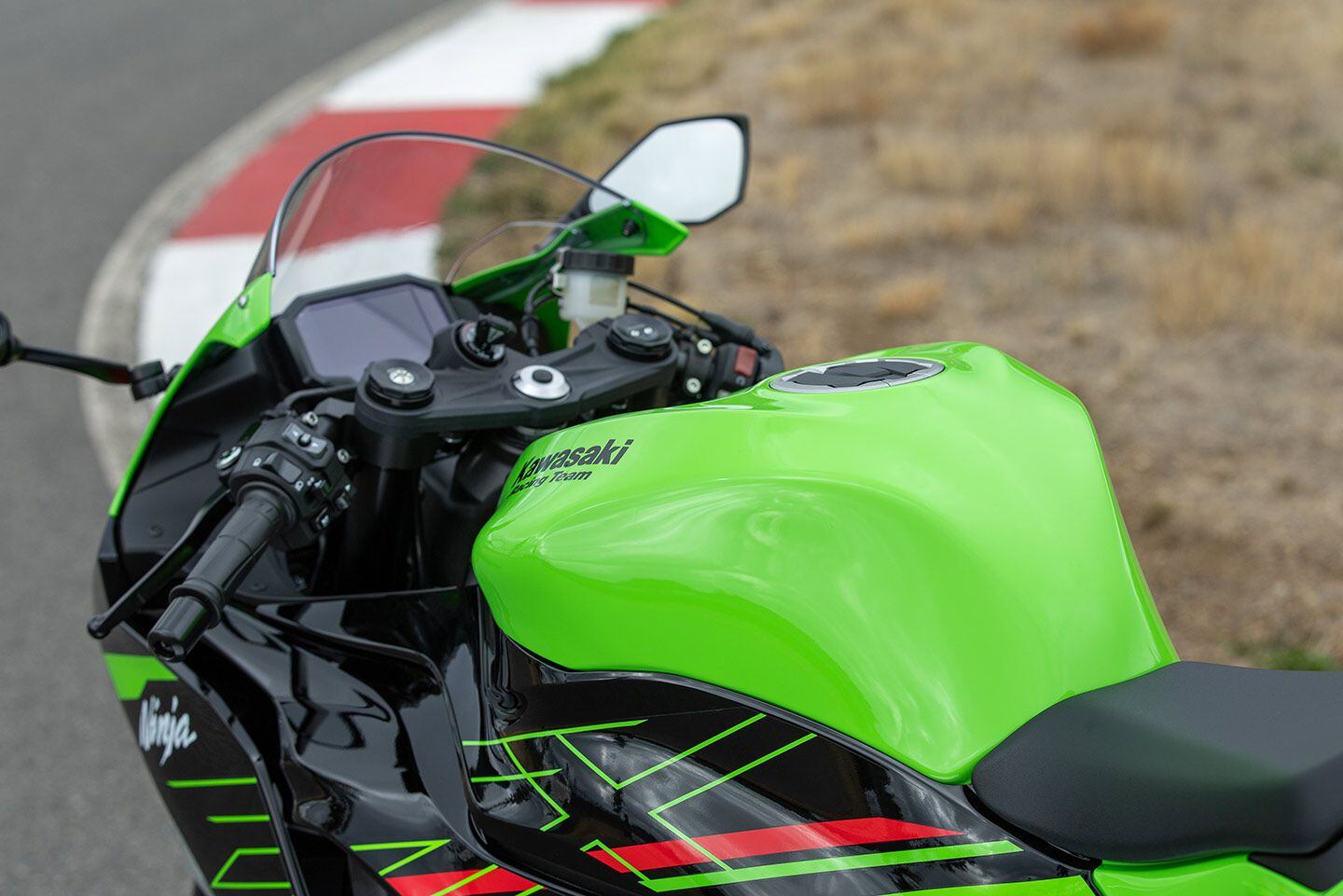 The riding position is typical for a sportbike. Tank, seat, and clip-on position are as they were before. (Kevin Wing/)Further evidence of Kawasaki’s efforts to only invest in what’s needed, the 2024 ZX-6R uses the same Showa Separate Function Fork - Big Piston (SFF-BP) fork and shock as before. It does, however, get new, 310mm round front brake discs (versus petal type) and rolls on Pirelli Diablo Rosso IV tires. Riding Impressions Admittedly, the ZX-6Rs that greeted us at Ridge Motorsports Park in Shelton, Washington, were shod with Pirelli Diablo Superbike Slicks rather than the Pirelli Diablo Rosso IV tires that come stock. Needed? Maybe not, but seeing a ZX-6R parked in a trackside garage, with slicks wrapped in tire warmers, just feels right. Kawasaki might have built the ZX-6R with the street rider in mind, but there’s no denying that this really is where a middleweight supersport bike looks most at home. A supersport, of course, means aggressive rider triangle, and that’s very much the case here; a tight footpeg-to-seat gap and low-mounted, heavily angled clip-ons are great for a tucked-in riding position, but also a reminder that this bike was not designed with riders over 6 feet in mind. This only becomes a problem when adjusting your body at corner exit so that you can grab an upshift, or when trying to tuck behind the bubble down a long front straight. The same is true for Honda’s CBR600RR, but Suzuki’s GSX-R600, which we also tested recently, is more relaxed and spacious. 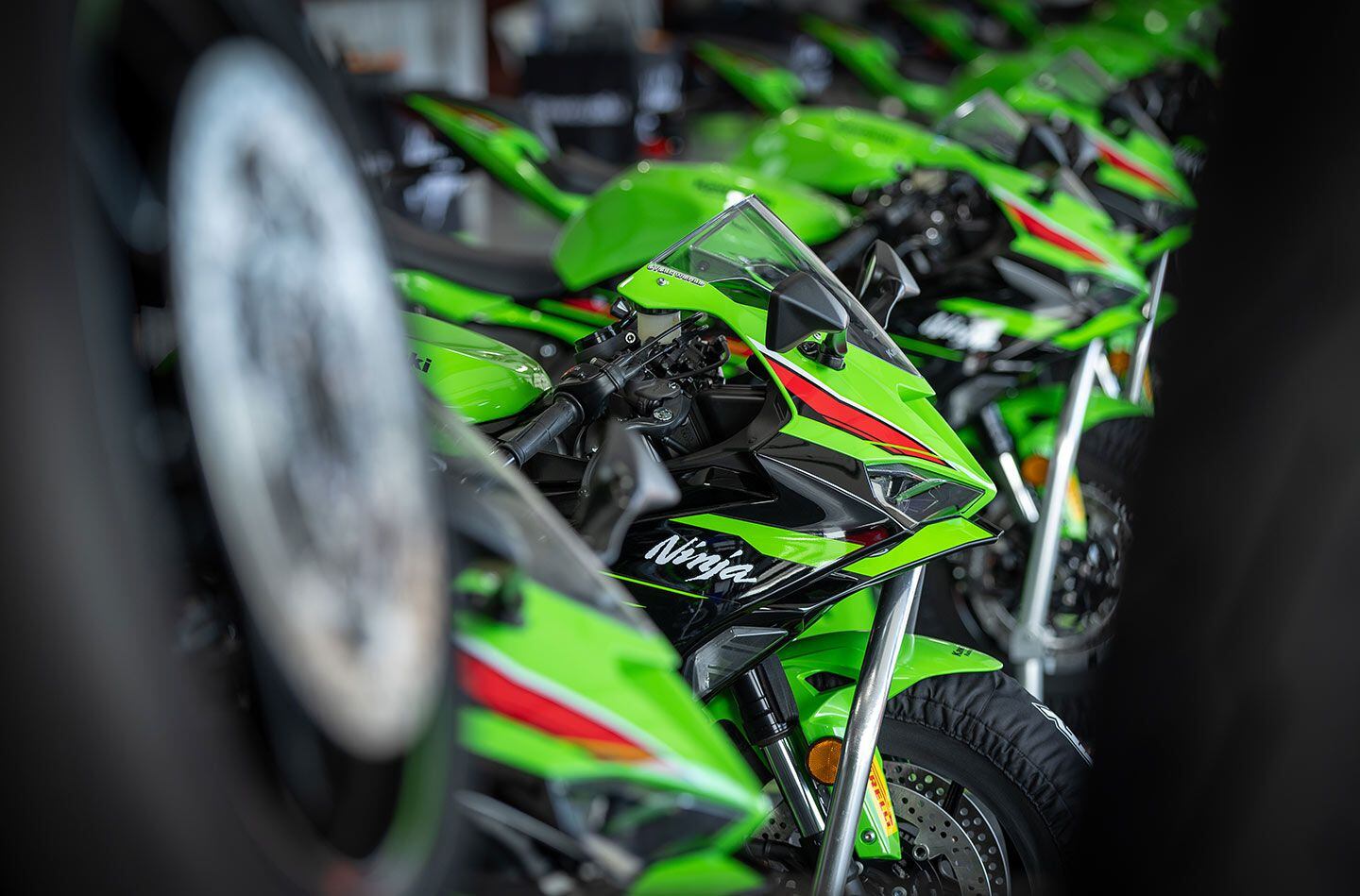 Few sights are as good as a sportbike on warmers, ready to hit the track. (Kevin Wing/)What the ZX-6R gives up in terms of “comfort,” it makes up for with that added 37cc displacement, which proved to be massively beneficial when testing a 2023 ZX-6R on the street earlier this year and is equally as beneficial at the track. It’s hard to detect the “increased” midrange performance that Kawasaki says it’s found for 2024, but the added grunt that this bike has, when compared to a more traditional, 599cc inline-four supersport, is immediately recognizable. Drive off corners is not dependent on your being pinpoint accurate with the throttle at the apex, nor do you have to be as focused on rpm. The ZX-6R is a less mentally demanding bike to ride. Stand the bike up, aim it down a long front straight, and you’ll be greeted by the sweet sound of an inline-four rapidly building rpm. Although, admittedly, peak power arrives 500 rpm earlier than in years past, and that brings the party to a relatively sudden halt as you reach the top-end of each gear. You feel the effects of the new cam profiles at the upper limit, as the bike simply stops pulling. Fortunately, this will be less of a factor on the street. 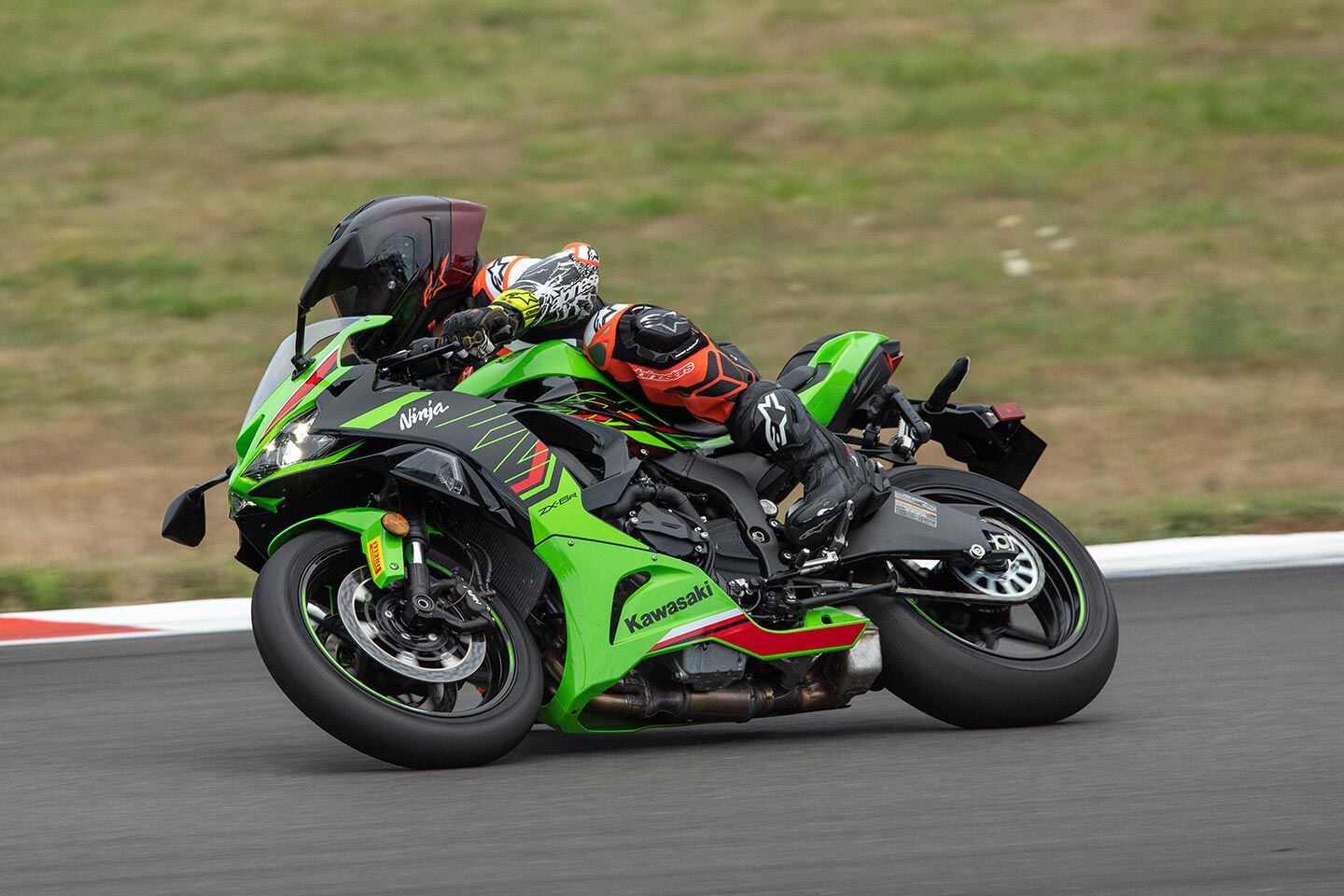 The ZX-6R frame has been carried over, because, well, it simply works. Showa suspension is best when stiffened up for track riding and works well enough for a fast trackday pace. (Kevin Wing/)A proper middleweight supersport is one that allows you to develop as a rider. You’re not fighting the budget-conscious chassis of a small-displacement bike, or having to manage 180 hp, which allows you to be more aggressive and focus on carrying good corner speed. The ZX-6R allows you to do that thanks, in part, to the well-balanced chassis that remains planted at full lean, while offering great feedback to the rider. If there’s any shortcoming, it’s in the Showa suspension, which needs to be stiffened up for track riding, and never really feels as composed as you’d like it when really being pushed. Kawasaki reminds us that this is something it has to consider when building a suspension setup for a bike that will spend a lot of time on the street, and that there are some great aftermarket options for the serious trackday rider or racer. 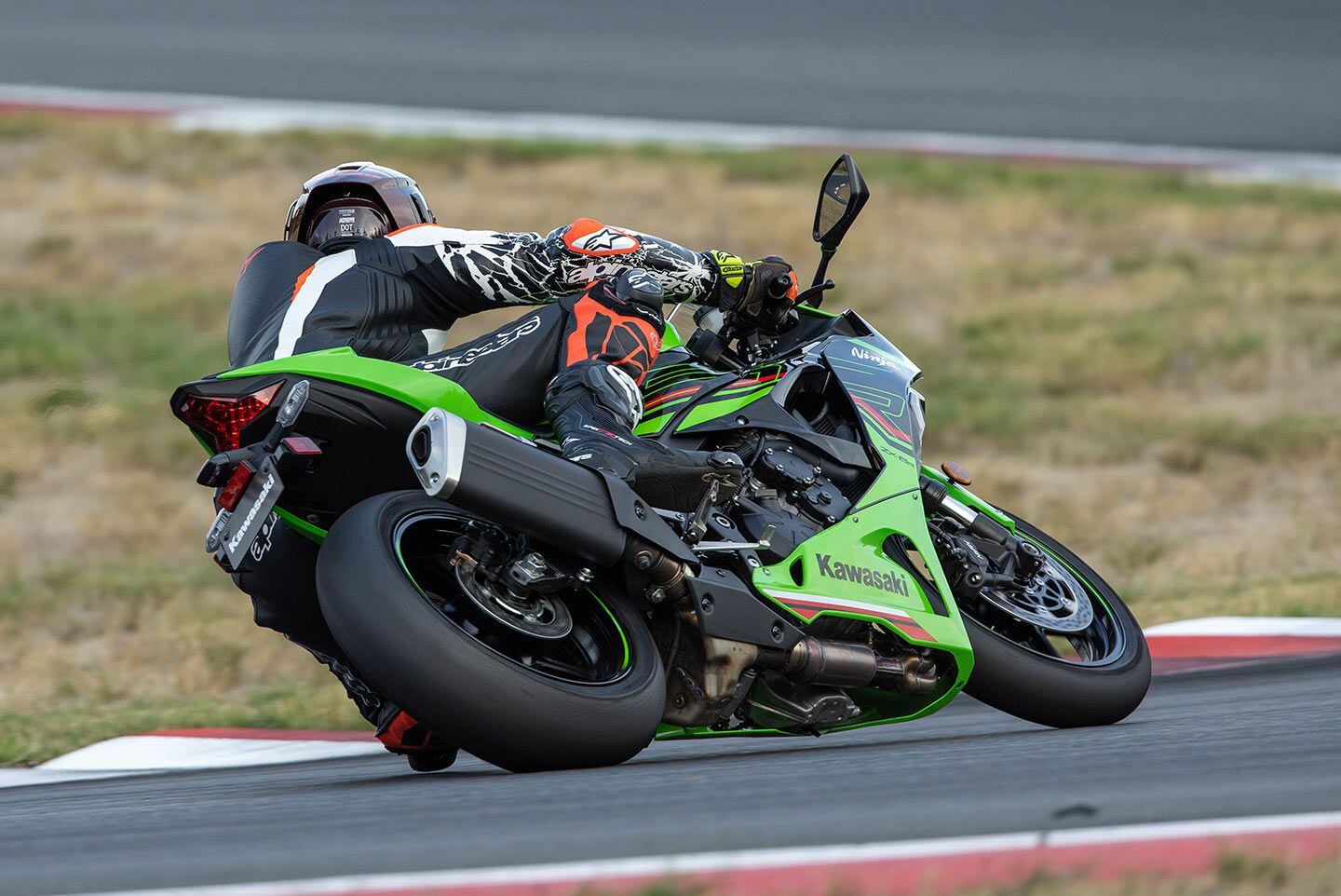 Just visible is the ZX-6R’s new header pipe, one of a handful of changes intended to help the bike meet Euro 5 emissions standards. Additional changes include new camshafts and updated intake funnels. (Kevin Wing/)We might also recommend upgraded brake pads for the trackday rider or racer, as the stock brake package doesn’t have an abundance of bite in the initial part of the pull, nor a significant amount of power as you squeeze the lever. You’ll get stopped, but you can’t help but feel like, at the track especially, a little more braking performance would be useful. Small suspension and brake qualms aside, it’s amazing how hard you can push the ZX-6R around a racetrack, with only a few clicker adjustments. Even at a fast pace, on the undulating Ridge Motorsports Park, the bike never stepped out, or warned that we were remotely near its limits. This is a bike you can go to the track with and hone your skills as a rider. 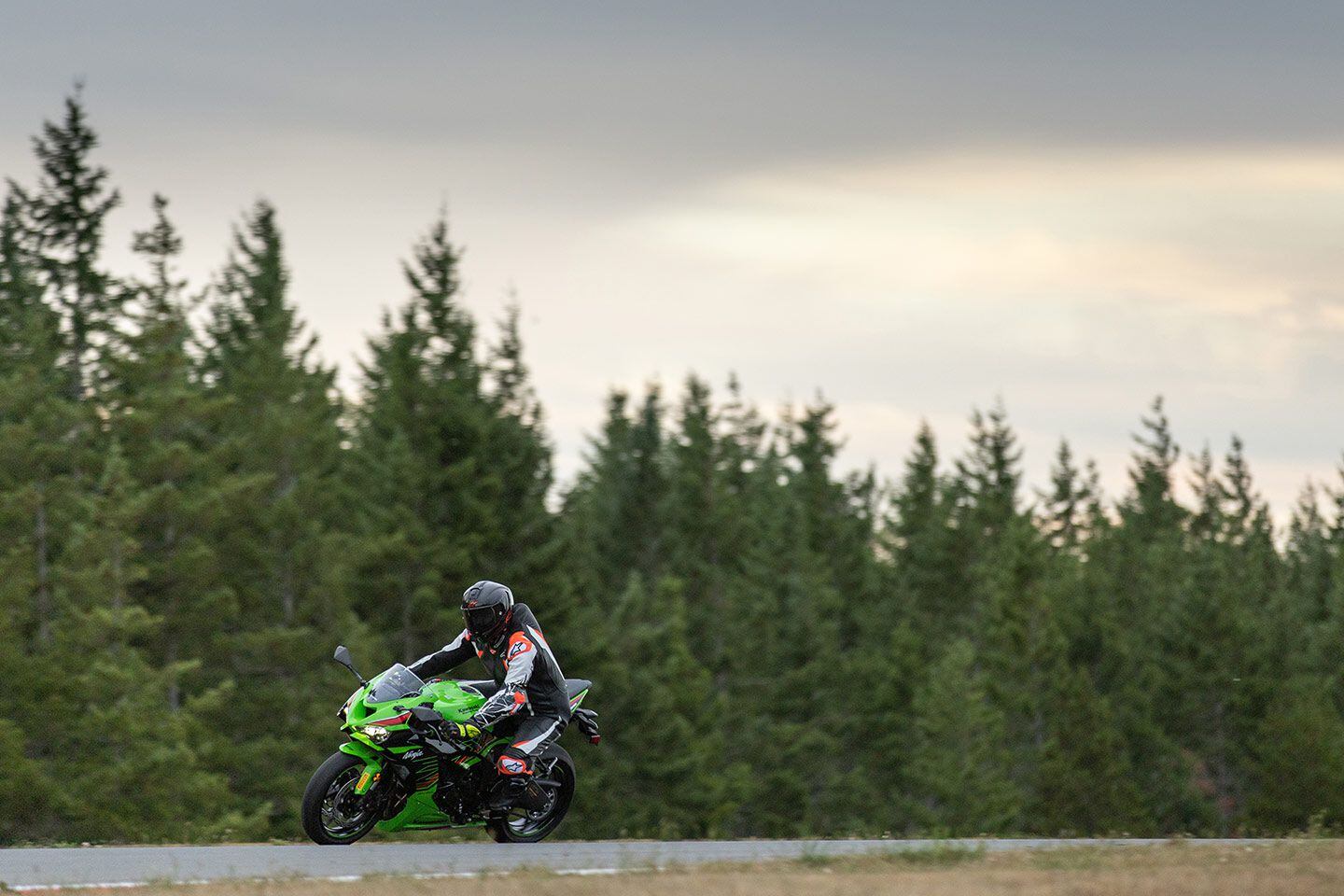 No major changes to the ZX-6R brakes for 2024, hold for round front brake discs (versus wave type). The braking package gets the job done, but doesn’t have the awe-inspiring stopping power some as newer braking packages elsewhere in the sportbike world. (Kevin Wing/)Electronics play a role in keeping the ZX-6R in line, but are about as simple as you’d like—no wheelie, slide, or engine-brake control here. There are no IMUs either; traction control relies on front and rear wheel speed, rpm, throttle position, and gear position data to get a real-time picture of traction and adapt accordingly. And it works, stepping in with short but effective cuts in power as you’re driving off tight corners and trying to put the power down. In level 2, the cut comes in earlier and lasts a moment longer, but doesn’t excessively hinder drive. So, no, it’s not the latest and greatest system, but it’s a useful safety net. Also worth mentioning is that the ZX-6R now has Bluetooth technology built into the instrument panel, which allows riders to connect to their phone using Kawasaki’s Rideology app. Setup is relatively easy, though given the narrow scope of the electronics package, there’s not a lot to see or do in the app. Owners might like being able to access vehicle info or log their rides, however. Plus, you can get phone notices (call or email) sent to the dash. How many ZX-6R riders will benefit from getting email notifications sent to their dash? We’re not sure. 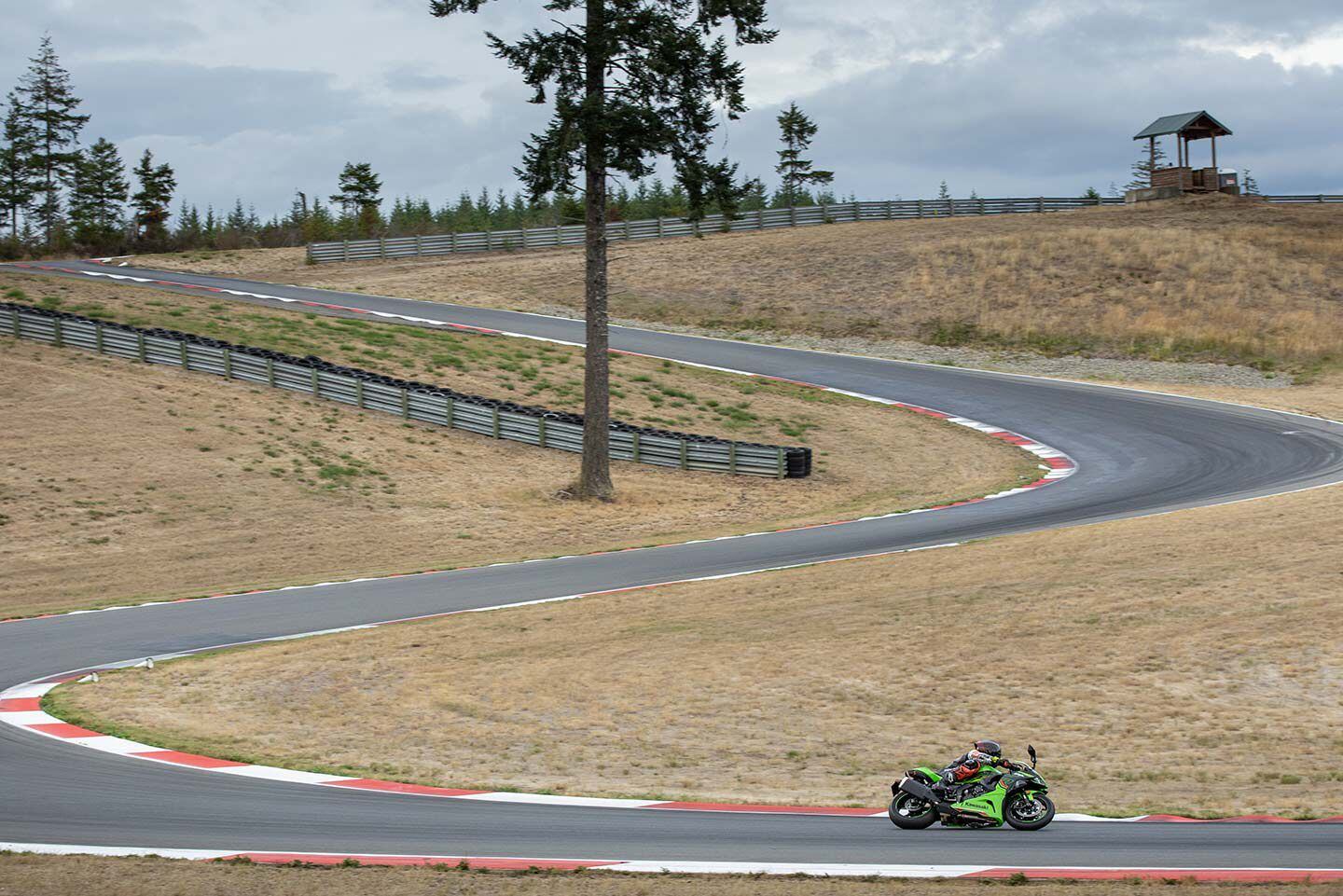 A middleweight supersport bike is the perfect tool for a technical track like Ridge Motorsports Park. (Kevin Wing/)Final Thoughts In many ways, the ZX-6R’s electronics package is a representation of the bike as a whole; this is not the most advanced motorcycle on the market, but there’s beauty in its simplicity and in its ability to get the job done. It’s fun, still plenty fast, and has enough performance to enable riders to grow their skill set—on the street or at the racetrack. For those shopping for a middleweight sportbike, there’s also the very important, 37cc displacement advantage to consider; small as that might seem on paper, the added midrange this offers up makes a noticeable difference in your experience. Kawasaki hopes, of course, that this advantage, along with the new styling and modern look, will keep customers coming back for more. Given that the ZX-6R offers all of this at essentially the same price as the competition, we can’t see why that wouldn’t be the case. Consider it the most sensible option for the rider looking to take the next step in their sportbike journey. 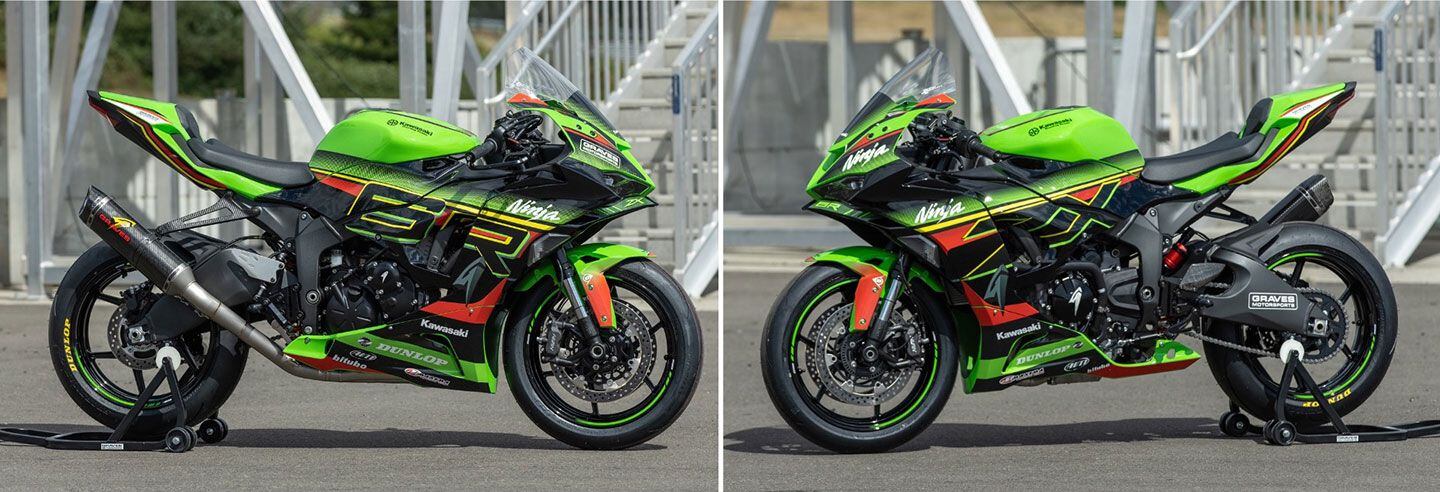 Wonder what a 2024 ZX-6R “trackday supersport” build would look like? Wonder no more, thanks to Graves Motorsports. (Kevin Wing/) 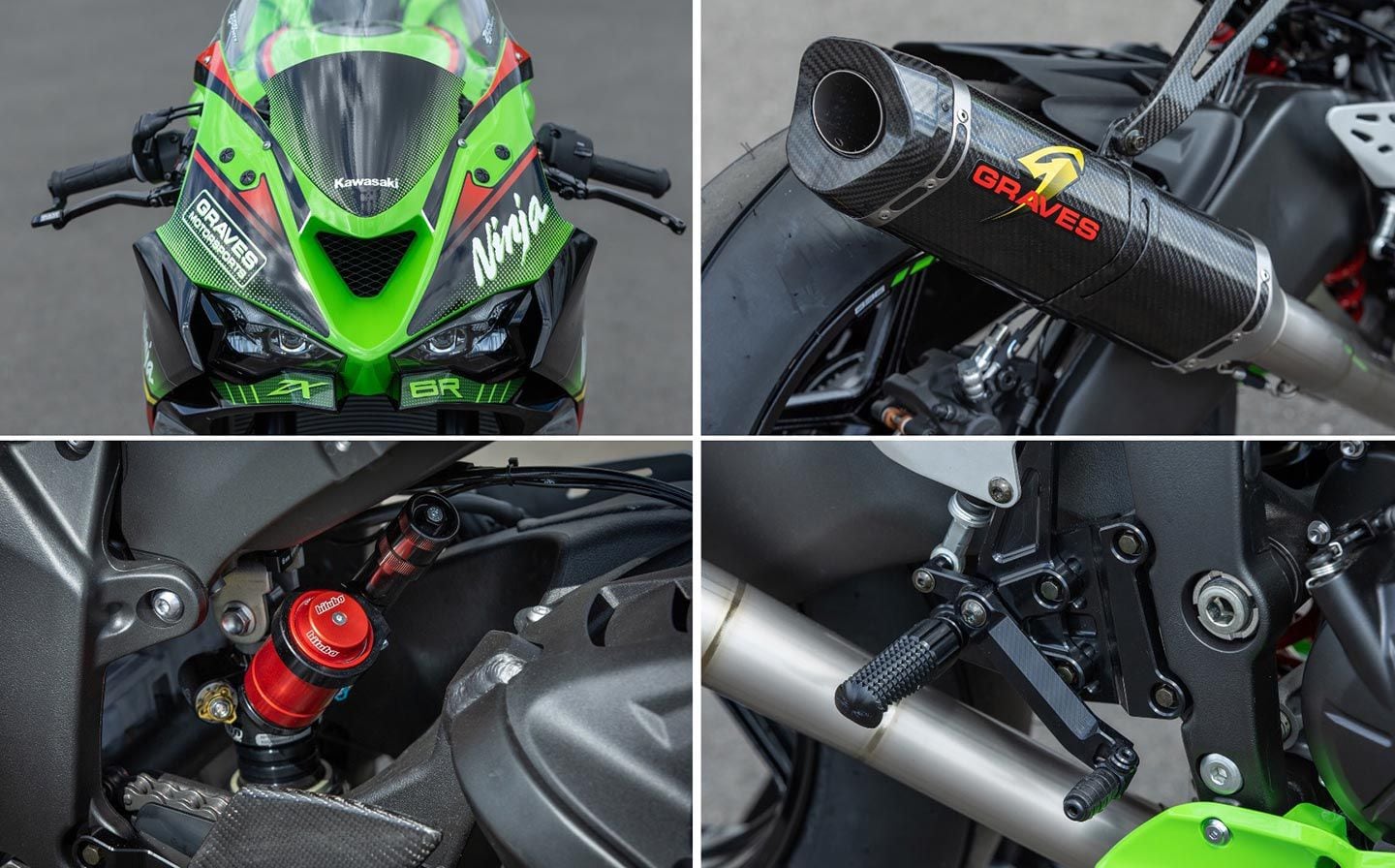 A closer look at some of the hardware on the Graves Motorsports ZX-6R build. (Kevin Wing/)2024 Kawasaki ZX-6R ABS Specs MSRP:$11,299 (non-ABS) / $12,299 (ABS)Engine:DOHC, liquid-cooled inline-4; 4 valves/cyl.Displacement:636ccBore x Stroke:67.0 x 45.1mmCompression Ratio:12.9:1Transmission/Final Drive:6-speed/chainFuel System:DFI w/ 38mm Keihin throttle bodies (4)Clutch:FCC slipper/assistEngine Management/Ignition:TCBI w/ electronic advanceFrame:Twin-spar aluminumFront Suspension:41mm inverted Showa SFF-BP fork, rebound, compression damping, spring preload adjustable; 4.7 in. travelRear Suspension:Bottom-link Uni-Trak w/ gas-charged shock, piggyback reservoir, compression, rebound damping, spring preload adjustable; 5.9 in. travelFront Brake:Nissin radial-mount 4-piston calipers, semi-floating 310mm discs w/ ABSRear Brake:1-piston caliper, 220mm petal disc w/ ABSWheels, Front/Rear:Cast aluminumTires, Front/Rear:Pirelli Diablo Rosso IV; 120/70-17 / 180/55-17Rake/Trail:23.5°/4.0 in.Wheelbase:55.1 in.Ground Clearance:5.1 in.Seat Height:32.7 in.Fuel Capacity:4.5 gal.Claimed Wet Weight:437 lb. (ABS) / 432 lb. (non-ABS)Contact:kawasaki.com 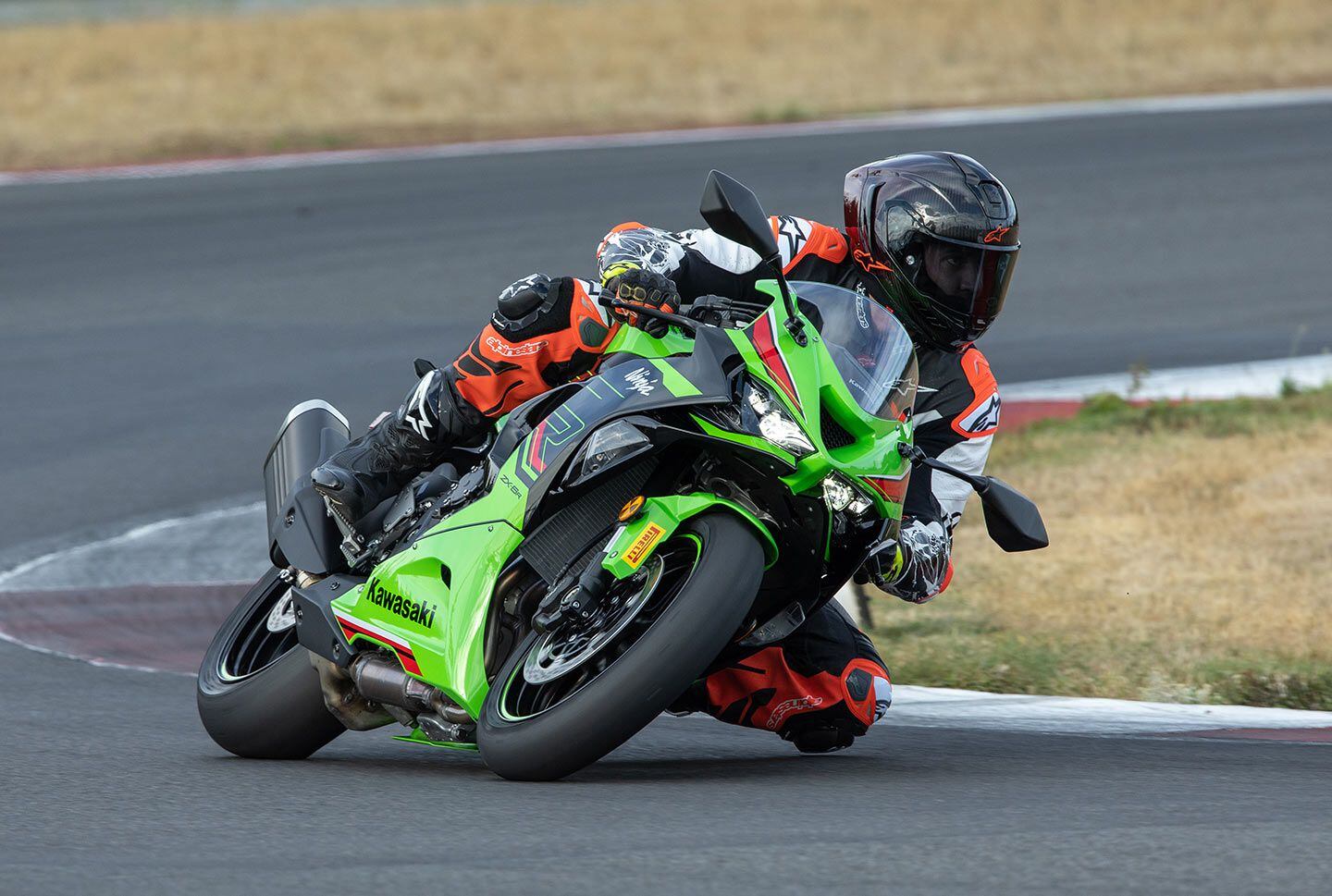 2024 Kawasaki ZX-6R. (Kevin Wing/)Gearbox Helmet: Alpinestars Supertech R10 Suit: Alpinestars Racing Absolute V2 Leather Suit Gloves: Alpinestars GP Tech V2 Boots: Alpinestars Supertech R
__________________________________________________
I'm a bot. I don't need no stinkin' signature... |
|
|

|
 |
 Similar Threads
Similar Threads
|
||||
| Thread | Thread Starter | Forum | Replies | Last Post |
| [cycleworld.com] - 2024 Yamaha Tracer 9 GT+ First Ride | Ninjette Newsbot | Motorcycling News | 0 | September 8th, 2023 02:12 PM |
| [ridermagazine.com] - 2024 BMW R 18 Roctane | First Ride Review | Ninjette Newsbot | Motorcycling News | 0 | May 26th, 2023 04:51 PM |
| [cycleworld.com] - First Ride: 2024 Triumph Street Triple 765 | Ninjette Newsbot | Motorcycling News | 0 | March 3rd, 2023 03:15 PM |
| [cycleworld.com] - 2022 Kawasaki Versys 650 LT First Ride Review | Ninjette Newsbot | Motorcycling News | 0 | July 1st, 2022 01:13 PM |
| [cycleworld.com] - 2022 Kawasaki Z650RS First Ride Review | Ninjette Newsbot | Motorcycling News | 0 | April 20th, 2022 11:52 AM |
|
|